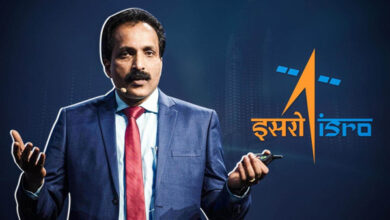PSLV, India’s versatile workhorse rocket turns 30 and going strong
By R Anil Kumar
- It is going to be a 30-year-old vehicle. And is still going strong. Well, that is India’s first rocket Polar Satellite Launch Vehicle (PSLV). It was on September 20, 1993, that the first developmental flight of PSLV took place carrying the 846kg IRS-1E satellite.
- Using the Polar Satellite Launch Vehicle (PSLV) rocket, the Indian Space Research Organisation (ISRO) has sent a total of 431 satellites from different countries into space orbit so far.
Bangalore, September 8. It is very rare that a rocket serves for 30 years and undertakes three first-of-its-kind missions Moon, Mars and now Sun. In its stellar operational life thus far, this four-staged rocket has made history for India by successfully launching India’s maiden Moon Orbiter Chandrayaan-1, its maiden Mars Mission Mangalyaan and now the launch of India’s maiden mission to study the Sun — Aditya-L1.

It is the rocket that marked India’s foray into the elite league of space-faring nations and continues to make the country’s flag fly high as a commercial launch service provider.
India’s Polar Satellite Launch Vehicle (PSLV) now heads into its 30th year of Service. First launched in September 1993, the PSLV vehicle gradually went on to earn the title of India’s workhorse rocket.
Given the rate at which re-usable rocket technology, clean-burning fuels, low-cost launch options and modern manufacturing processes are evolving, it is indeed a marvel that PSLV holds on amid the global competition. ISRO Chief Dr S Somnath also mentioned the impending retirement of PSLV after 30 more launches.
He reasoned that the manufacturing process was old, the rocket was based on 1980s technology with further cost reduction not possible and the vehicle used toxic and carcinogenic fuels.
For ISRO, PSLV is as robust as a rocket gets. In its 58 launches to date, the rocket has delivered successful outcomes in 55. That’s a whopping 95 per cent success rate and is rivalled by very few rockets in the world.
India’s own LVM3 rocket, the biggest and most powerful to be built by ISRO has so far delivered successes in all seven of its missions and enjoys a 100 per cent success rate.
However, in terms of number of missions undertaken and the versatile roles it has played, the PSLV stands taller than its muscular cousin, the LVM3.
While PSLV has remained the mainstay of ISRO for lofting commercial satellites, the LVM3 rocket also joined the commercial club from October 2022 onwards and lofted 36 internet-beaming satellites of the UK-based OneWeb.
Using the Polar Satellite Launch Vehicle (PSLV) rocket, the Indian Space Research Organisation (ISRO) has sent a total of 431 satellites from different countries into space orbit so far.
Over the years, the PSLV rocket has launched satellites for Indian and foreign customers, while the LVM3 has launched 72 customer satellites, all belonging to OneWeb.
In 2017, India created a world record using its PSLV rocket by placing 104 satellites in orbit, the highest-ever to be launched in a single mission. This record remained unbeaten until 2021, when the SpaceX Falcon 9 rocket, which is exponentially more powerful and capable than the humble PSLV managed to loft 143 satellites into orbit, in a single go.
At the heart of the PSLV or its core stage is the Vikas engine, an Indo-French engine powered by Earth-storable liquid fuels. This engine is a crucial part of Indian spacefaring rockets and is a living and long-lasting testimony of the India-France space cooperation. The Vikas engine finds place in the GSLV rocket and the LVM3 rocket and is also the most powerful yet, Earth-storable liquid fuelled engine of ISRO.
On its latest expedition, the PSLV rocket XL (largest configuration) lifted off from the second launchpad of India’s spaceport, carrying the nation’s maiden mission to study the sun.
Titled Aditya-L1, the craft will cover a distance of 1.5 million kilometres in space, in a span of approximately 120 days. The craft will be travelling to Lagrange Point 1 or L1, a vantage point from where it would have an unobstructed view of the sun.
The Earth-Sun distance is approximately 150 million kilometres. The launch of Aditya-L1 comes barely 10 days after India soft-landed its Chandrayaan-3 craft (comprising a lander and rover) on the moon.
According to ISRO, placing the spacecraft at the L1 point provides a greater advantage of observing the solar activities and their effect on space weather in real-time. The spacecraft carries seven payloads to observe the photosphere, chromosphere and the outermost layers of the Sun (the corona) using electromagnetic and particle and magnetic field detectors.
Using the special vantage point L1, four payloads directly view the Sun and the remaining three payloads carry out in-situ studies of particles and fields at the Lagrange point L1, thus providing important scientific studies of the propagatory effect of solar dynamics in the interplanetary medium.
Fast forward to 2023, and India’s first commercial rocket PSLV is still going strong with the successful launch of Aditya L1 . The PSLV rocket will achieve a milestone of three decades this month.
Flagship Missions of the PSLV Rocket
The PSLV rocket successfully launched three of India’s flagship missions: Chandrayaan-1 – The Moon mission; the Mars Orbiter Mission (MOM) and Aditya L1 – the Sun Mission.
Over 30 years, the PSLV has not only orbited India’s own satellites but launched 431 foreign satellites belonging to 36 countries since 1999.
The rocket has also been used to put 104 satellites into orbit in a single flight.
Types of PSLV Rocket –The Indian Space Research Organisation (ISRO) launched five types of PSLV rocket –Standard, Core Alone, XL, DL, and QL.
The rockets differ in which strap-on boosters they use a factor which is largely determined by the weight of satellite being sent into orbit.
The PSLV is typically a four-stage rocket with a combination of solid and liquid fuel engines.
It is also equipped with six booster motors attached to the first stage to provide increased thrust during the initial phase of the flight.





